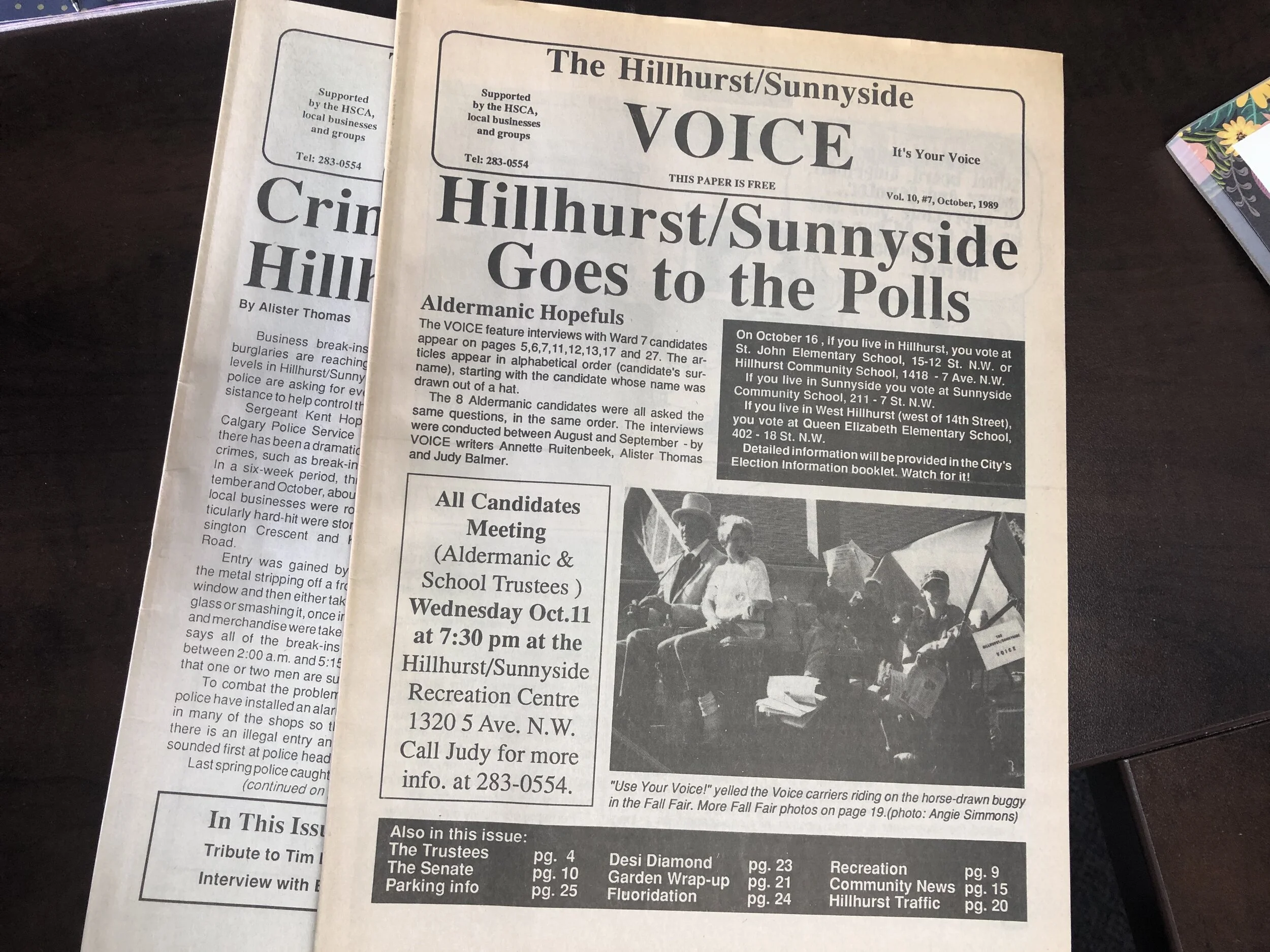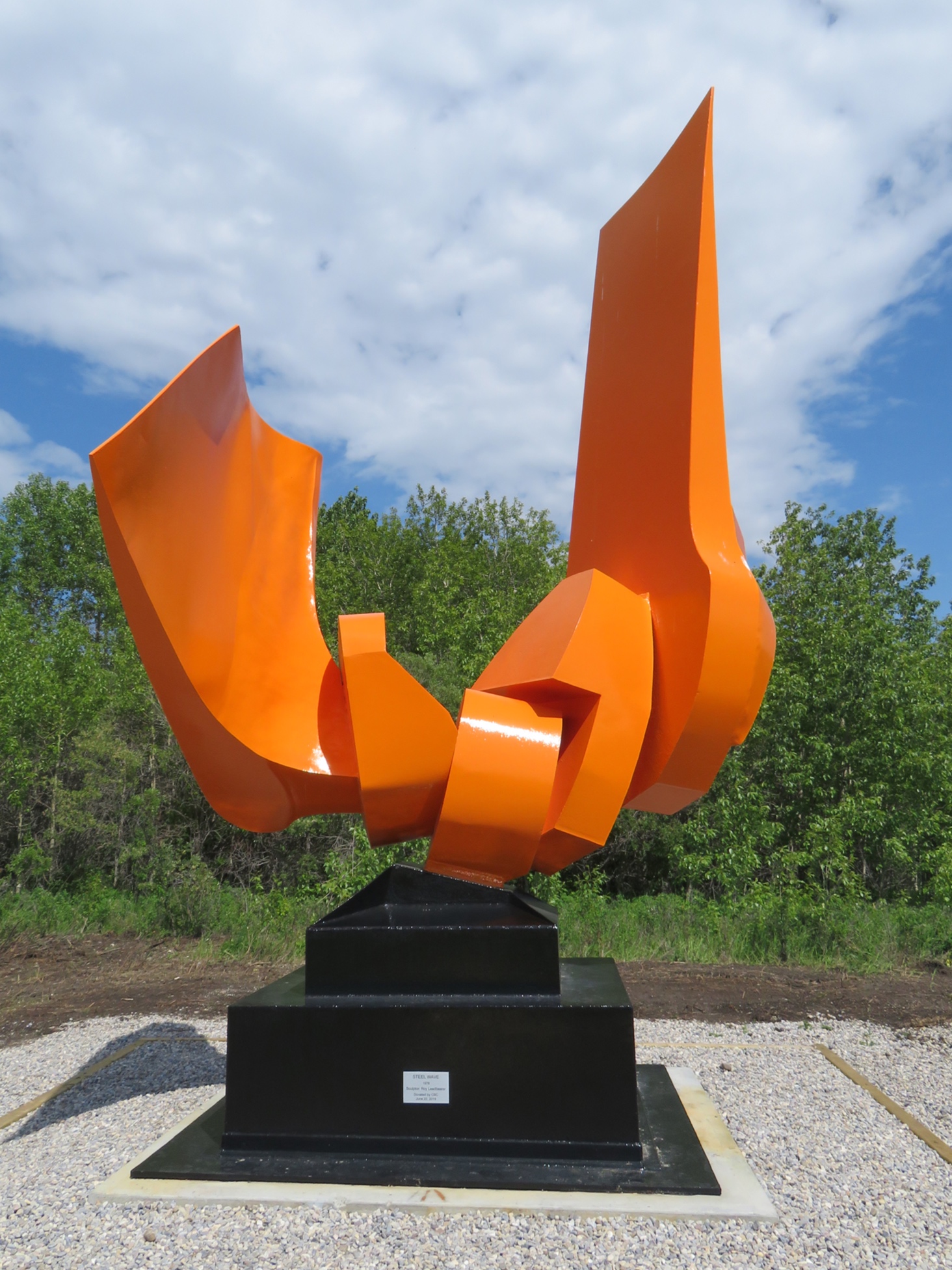“First off, don’t be shy about talking to businesses about waste. They’re literally invested in it, and when you make a change - even if it is one small take-out container, or a tupperware for leftovers from a meal - it will help them save money and reduce their environmental footprint as well. ”
By Hillhurst Sunnyside Resident, Jocelyn K.
One Sunday last Spring, I did something that felt extreme: I emptied my recycling bin on the kitchen floor and sorted it. I was feeling inspired to further reduce my waste and I definitely wanted to quit plastic. Over the past year, I haven’t eliminated single-use plastics coming into my home, but I’ve reduced my waste dramatically by following a few simple rules that work for me and my home. It wasn’t intimidating at all, it’s been easy and fun and I’ve done it all here in Hillhurst.
BYOC - Bring Your Own Container
Shopping in Kensington is rich with opportunities to reduce waste, especially if you remember to bring your own container (BYOC). Most businesses generally support opportunities to reduce waste and the only standard is that your containers have to be clean, dry and fit your purchase. Like bringing a reusable bag grocery shopping, the hardest part of reducing plastic waste is… remembering the containers! In the interest of research, one sunny afternoon we packed them up and took a stroll around Kensington to chat with retailers about reducing waste. Here’s what we found:
First off, don’t be shy about talking to businesses about waste. They’re literally invested in it, and when you make a change - even if it is one small take-out container, or a tupperware for leftovers from a meal - it will help them save money and reduce their environmental footprint as well.
Canary Goods Refillery and Zero Waste Market opened their first permanent retail space on Kensington Road in 2019, offering a range of household goods and personal care items. Their refillery offers a beautiful display of common goods, from laundry detergent to dishwasher tabs, that will certainly inspire you to BYOC. They always seem to have a small stash of containers available for free, or you can buy one of their beautiful amber bottles to fill with their products.
Since 1997, Sunnyside Natural Market has been helping customers reduce waste. They offer a broad selection of environmental products such as recycled paper, refillable cleaning products, and health care items. They recently renovated to expand their bulk offerings, adding bulk lettuces to their produce area and replaced plastic bags and containers with compostable ones that are locally sourced. An advantage of shopping BYOC is you can buy exactly what you need and Sunnyside staff will portion containers to make sure you get exactly what you need. Their robust selection of spices is especially great when you just need a little product to finish a complicated recipe.
Since trying to reduce waste, I’ve yet to find an easy way to remove sticky labels from containers I want to reuse. A friend enthusiastically recommended The Beehive on 10 Street for their Glue Gone Adhesive remover. They also carry bulk beeswax and pine resin if you’re interested in making your own beeswax food wraps.
The Roasterie offers a discount on bulk coffee if you BYOC or reuse their packaging. When you bring your own mug, no matter what size it is, you’re charged for a small 12 ounce.
Japanese housewares store Nanao Kimono on 10 Street is a hidden gem with great choices to practice your new habit. Replace paper serviettes with a square furoshiki cloth and they’ll show you how to wrap it into a little bag to carry your lunch in. They also have a large selection of bento boxes for a zero-waste lunch, and we think paper washi tape is a pretty cute way to label your containers.
A new member of the Hillhurst business community, PB&J offers nut butters and will happily tare your container before you fill them at the self-serve machines. They encourage BYOC and told us they’ve already noticed customers asking to ‘hold the box’ when ordering their sandwiches. Crave Cupcakes will happily bypass their trademark clamshell containers and pack your order in any container you have, as long as it’s clean and fits appropriately. Pie Junkie already wrap their delicious sweet and savoury pies in paper, but encourage BYOC as well.
Every restaurant we spoke to will happily pack your take-away order BYOC style, and one employee asked us to remind customers to bring along a container to eat-in in case of leftovers.
Jonathan at The Naked Leaf offers $1.50 discount on 100 grams of tea in any container you have or reuse one of his collectable tea tins! Stop in with your travel mug for an excellent discount on any of his organic teas.
Making it CRYSTAL CLEAR! Our newest Membership Partner Good Trade Coffee (@goodtradeco) offers clear signage for recycling coffee cups, lids, and sleeves
When considering how you’ll reduce waste in your home, start small and keep it manageable. Never compare your efforts to others - it’s a commitment that has to work for your life and for your family.






















![You GROW girl! Heather & Sarah strike a pose at the Volunteer Appreciation Photobooth, 2019 [Photo by Dexter Martin]](https://images.squarespace-cdn.com/content/v1/588e65d737c5818a6a061678/1576168120443-NRUGCODXFRQ47GMN0523/Volunteer+photo+5.jpeg)


















